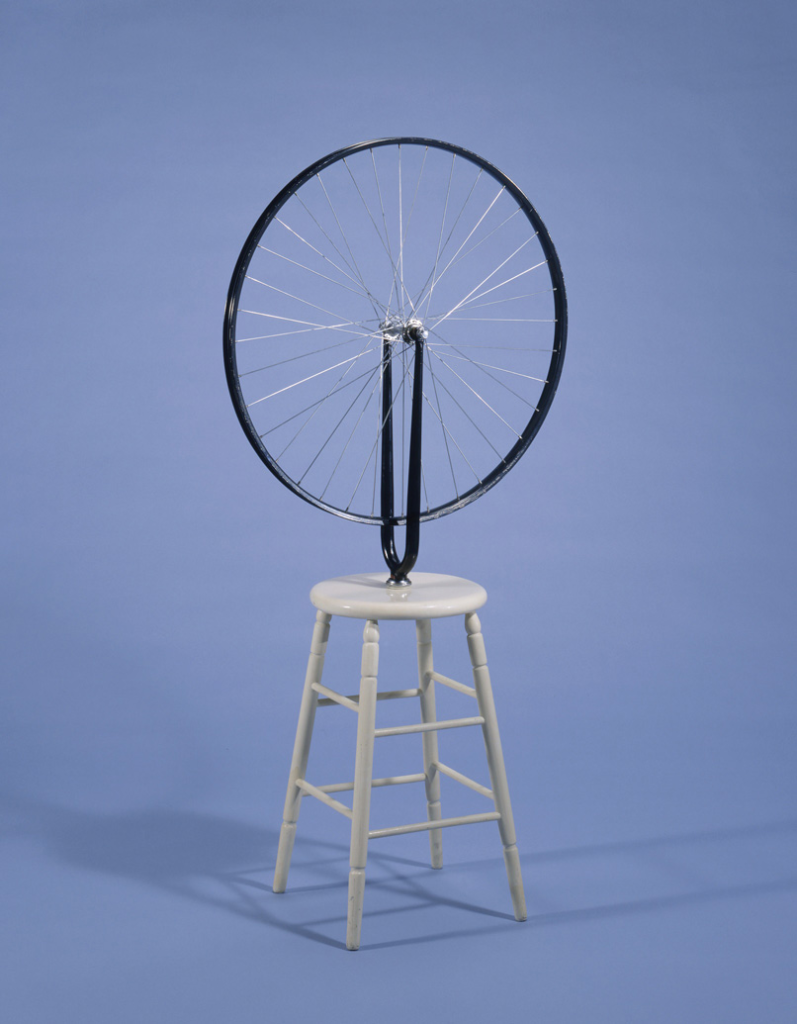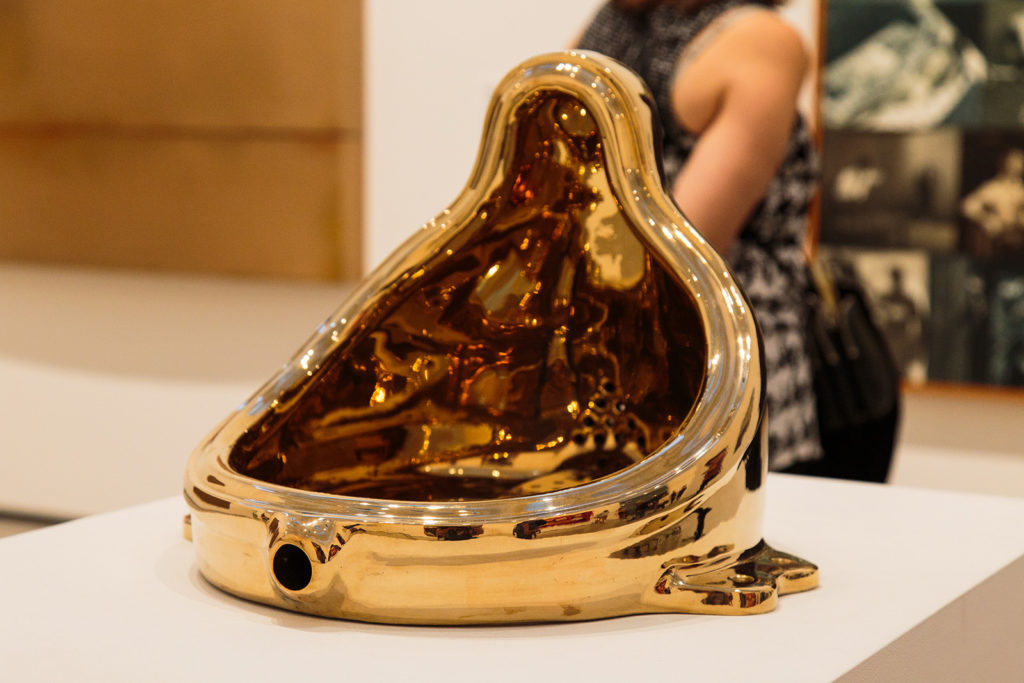Marcel Duchamp I Dont Believe in Art I Believe in Artists
I don't believe in art. I believe in artists. – Marcel Duchamp
Marcel Duchamp was ane of the artists who challenged long-held behavior about the art cosmos process and art itself. Duchamp was a successful painter in Paris in the years leading upwards to Globe War I. "I was interested in ideas — not only in aesthetic products," he said, explaining why he stopped painting nearly altogether.
In search of an alternative to painting objects, Duchamp began presenting familiar items as works of fine art. He chose mass-produced, commercially available, and frequently commonsensical things to specify every bit art and assign labels to. He shattered centuries of thinking about the artist's position as a competent producer of original handcrafted works by coining the term "readymades." "An everyday item might be raised to the dignity of a piece of work of fine art by the simple choosing of an creative person," Duchamp claimed.
Rebel, Agent Provocateur, and Principal of Subversion
Marcel Duchamp, a French-American painter, sculptor, author, and chess role player was built-in on July 28, 1887. Duchamp'southward works were associated with Cubism, Dada, and conceptual art movements and were often considered as one of the almost seminal names in early 20th century art responsible for revolutionary breakthroughs in plastic art, such every bit painting and sculpture, aslope artists like Pablo Picasso and Henri Matisse.
Few artists may merits to accept contradistinct the path of art history as significantly equally Marcel Duchamp. His early readymades generated shock waves beyond the art earth that may all the same exist felt today past questioning the fundamental concept of what constitutes art.
Duchamp's ongoing interest in the mechanics of desire and human sexuality, too equally his penchant for wordplay, also connects his work with that of the Surrealists, despite his adamant refusal to exist associated with any artistic movement. He is often regarded equally the founder of conceptual fine art considering of his conviction that fine art should exist motivated by ideas above all else.
Duchamp'south unwillingness to pursue a traditional creative road was equaled simply by his fear of repetition, which explains the very modest number of works he made throughout his art career. Duchamp famously spent his last years playing chess, even while he worked on his concluding cryptic masterwork in surreptitious, which was simply revealed later on his death.

Readymades – How Conceptual Art Came To Exist
Duchamp pioneered two of the most significant breakthroughs of the twentieth century in sculpture: kinetic art and readymade fine art. These were everyday things that had been slightly changed and labeled by the artist equally works of art.
The word "readymade," coined past Duchamp, referred to mass-produced commonplace things removed from their regular setting and elevated to the rank of artworks solely via the creative person'south choosing. The readymade, which was both a performative act and a stylistic term, has far-reaching consequences for what may exist chosen an object of art.
Bike Bike (1913), a wheel placed on a wooden seat, and In Accelerate of the Broken Arm, a snow shovel, were among his early readymades (1915). One of his early works is also the Readymade Bottle Dryer, created in 1914, was a mass-produced everyday object, regarded by most equally a relatively useless object whose shape, when separated from its purpose, had its own distinct feature, but which had previously been hidden in evidently sight, until Duchamp'southward gesture of signing and the meaning it bestowed. This gesture of Duchamp was after considered the "genesis" of conceptual art.
In 1917, Duchamp purchased a urinal, a urinal basin for public urinals, from the New York germ-free ware retailer "J. 50. Mott Iron Works," gave it the title Fountain, signed it with the pseudonym "R.[ichard] Mutt." He so submitted it to the Club of Independent Artists' first annual exhibition in New York under this pseudonymized artist's name.

Challenging The Notion Of What Is Art
Duchamp purposefully broke all of conventional fine art's "rules," provoking the jury of the show, to which he belonged and from which he resigned in protestation subsequently the piece was rejected. Fountain was photographed and and so thrown away past Alfred Stieglitz and urinated on by Brian Eno, an creative person and musician, at the Museum of Modern Art. Note that it is sometimes credited to the German-born poet and artist Baroness Elsa von Freytag-Loringhoven rather than the artist with whom information technology is most frequently identified. But undoubtedly, it is the most notorious readymade work of fine art in art history. It inspired various artists from Grayson Perry to Damien Hirst, Richard Hamilton to Richard Wentworth, and many others to 'collaborate' with it in the nearly visible manner in gallery and museum settings.
It was as well the most well-known and purposefully controversial of all the readymade things he created. The fact that Duchamp picked the item from the plumbing store rather than fabricating them gave them a quasi-philosophical, iconoclastic edge, which sparked a broad rethinking of fine art'due south conventional standing in the 1950s and 1960s. Within postwar fine art, the readymade developed their own genre.
This challenge to conventional mediums such every bit painting, hand-crafted sculpture and their fundamental characteristics, were crucial elements to Duchamp'due south legacy in conceptualism. The monumental impacts made by his oeuvre in the final century have been a standing influence and inspiration to many iconic artists — Jasper Johns, Andy Warhol, and Jeff Koons, just to name a few. After all, how tin we forget the controversial "banana taped to a wall," the most recently minted notoriety by the Italian artist Maurizio Cattelan'southward Comedian without ever thinking of Duchamp?
Source: https://www.artdex.com/marcel-duchamps-readymades-birth-of-20th-century-conceptualism-conceptual-art-series-part-4/
0 Response to "Marcel Duchamp I Dont Believe in Art I Believe in Artists"
Post a Comment